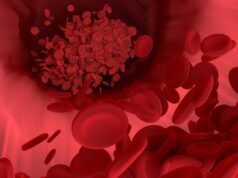
According to the results of PADN-5, pulmonary artery denervation (PADN) is associated with significant improvements in haemodynamic and clinical outcomes in patients with post-capillary pulmonary hypertension (CpcPH). Shao-Liang Chen, who presented the results of the study at the 2018 Transcatheter Cardiovascular Therapeutics (TCT) meeting (21–25 September, San Diego, USA), reviews pulmonary hypertension and discusses the results of the PADN-5 study.
Pulmonary arterial hypertension is an intractable disease, featured by progressively increased pulmonary vascular resistance and development of right ventricular failure, leading to premature cardiac death. While idiopathic pulmonary arterial hypertension is the most common subtype of the condition, pulmonary hypertension-associated with heart failure comprises the largest proportion of patients. Recently, a striking finding is that more and more elderly patients have been diagnosed as having pulmonary arterial hypertension—further increasing the complexity of reclassification and treatment. Currently, five classes of agents that target the three main signalling pathways in pulmonary arterial hypertension (approved by FDA), particularly in sequential combination therapy, having dramatically improved the survival rate. However, emerging data suggest that the benefits of certain combinations for pulmonary arterial hypertension or routine treatment of pulmonary arterial hypertension targeted drugs for pulmonary hypertension remain questionable, largely because the pathobiology of pulmonary arterial hypertension and pulmonary hypertension is complex and potentially involves the “cross-talk” between multiple mechanisms.
Pulmonary hypertension in the context of heart failure
Heart failure is a common final stage of most cardiovascular diseases. The backward transmission of increased left ventricular filling pressure results in elevated pulmonary venous pressure, a status known as passive or isolated post-capillary (Ipc) pulmonary hypertension, without an elevation of pulmonary vascular resistance or diastolic pressure gradient. Pulmonary hypertension is associated with global pulmonary vascular remodelling, leading to reactive or combined pre-capillary and CpcPH, which is defined as a DPG of ≥7 mmHg, or a pulmonary vascular resistance of >3 Wood units (WU), or both. CpcPH bears similar pathological changes of pulmonary artery WHO Group I pulmonary artery hypertension. Although the presence of pulmonary hypertension is a hallmark of poor clinical outcomes in patients with heart failure, traditional anti-heart failure medications, including β-adrenergic receptor blockade, angiotensin-converting enzyme inhibitor, angiotensin receptor blocker, calcium channel antagonists, and diuretics, appear to have less effect on pulmonary arterial remodelling in heart failure patients.
Neurohumoral over-activation in heart failure pulmonary hypertension is clinically demonstrated by increased circulating catecholamine levels and impaired heart rate variability, which may indicate the potential of using local nervous denervation for patients with CpcPH. In an experimental study, we further found that both the localisation of pulmonary artery nervous trunk (at the left lateral wall of main pulmonary artery) and a shorter distance between nervous trunk and pulmonary artery intimal surface anatomically favour the performance of pulmonary artery denervation (PADN). Furthermore, PADN was tested in patients with idiopathic pulmonary arterial hypertension and pulmonary hypertension secondary to left-side heart failure and showed beneficial effects on haemodynamic parameters and exercise capacity from a single centre and registry analysis.
The PADN-5 study
Recently, PADN-5 study showed that PADN treatment was associated with a significant increase in six-minute walk distance at the six-month follow-up point, which was in parallel to the improvement in cardiac functions, compared with the effects of medication treatment alone, which further confirmed our previous reports. The pathogenesis of heart failure with preserved ejection fraction (HFpEF) was different to that of heart failure with reserved ejection fraction (HFrEF). Notably, we found that PADN equally improved six–minute walking distance increase for patients with either HFrEF or HFpEF. This treatment effect by PADN may be partially explained by the fact that both diastolic and systolic cardiac functions were significantly promoted after PADN procedure. However, the underlying mechanisms linking local pulmonary artery nervous ablation to left ventricular functional improvements recall the requirement of further basic and clinical studies. Notably, less all-cause death was reported in the PADN treatment group.
Heart failure patients are mostly referred to cardiologists who in general have limited realisation of CpcPH, particularly in developing countries. While right heart catheterisation is not routinely recommended for patient with heart failure, PADN-5 study reported the importance of screening heart failure patients according to echocardiography. Usually, right heart catheterisation is expected for a patient who has a systolic pulmonary arterial pressure >45 mmHg. On the other hand, PADN procedure is somewhat different to other ablation procedures, it requires complete understanding of anatomy of pulmonary artery tree, haemodynamic monitoring, and possible complications management. Therefore, a new heart team including an interventional cardiologist, pulmonologist, echocardiographer, and sometimes specialists in non-invasive images would be a relevant in this context.
Coinciding with its presentation at TCT, PADN-5 was published online in the Journal of the American College of Cardiology: Cardiovascular Interventions
Shao-Ling Chen is at the Division of Cardiology, Nanjing First Hospital, Nanjing Medical University, Nanjing, China.










